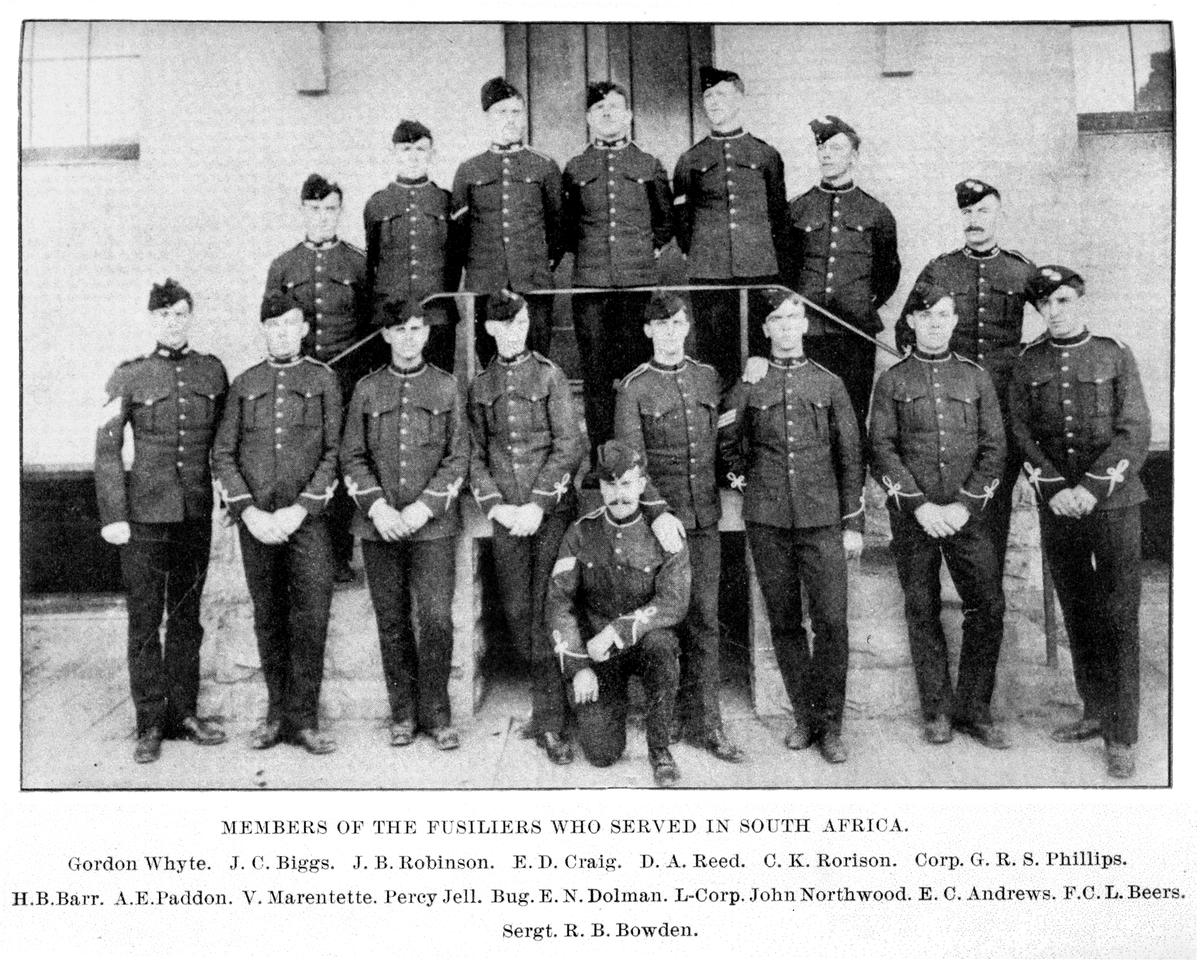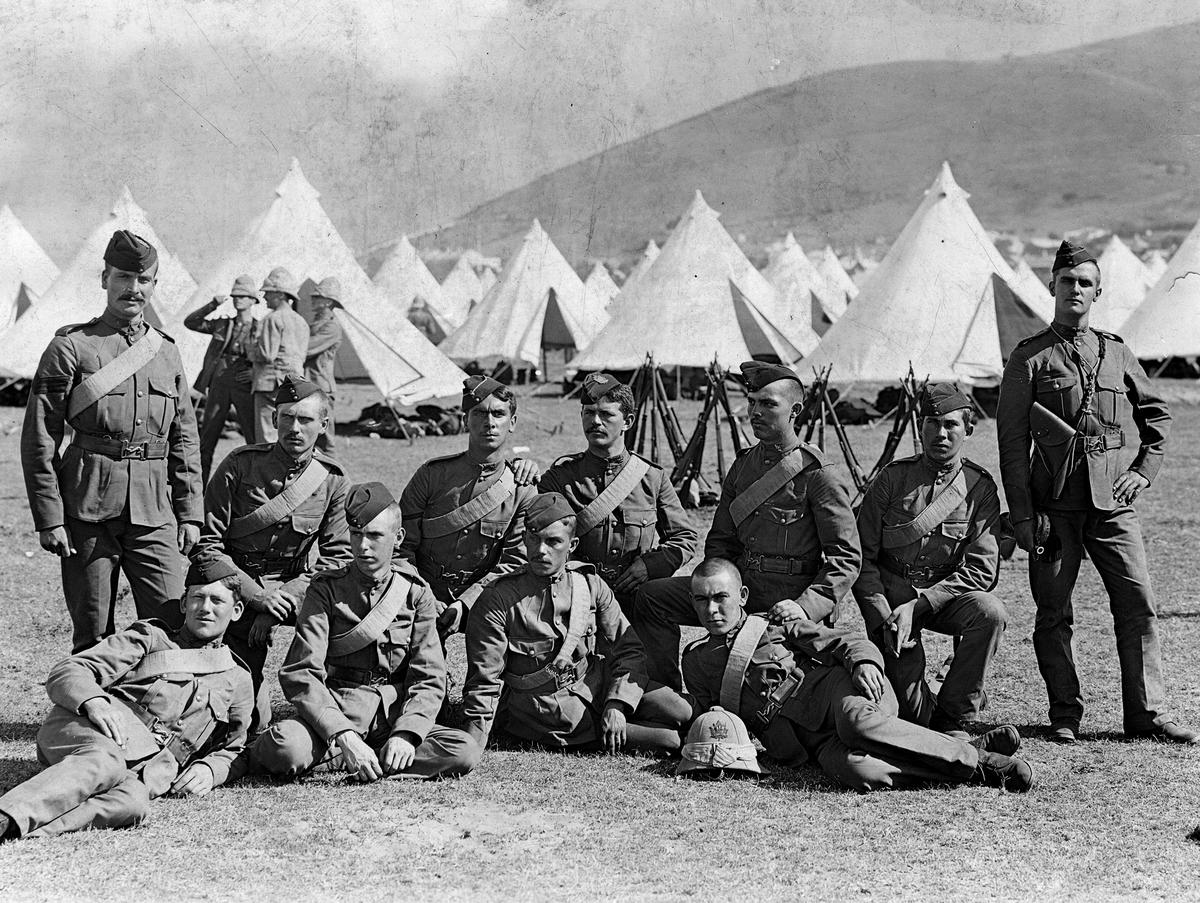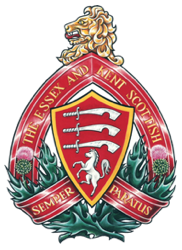Boer War 1899-1900

Members of the Fusiliers who served in South Africa
After the 21st Essex Battalion of Infantry was renamed to the 21st Battalion Essex Fusiliers in 1887, the regiment saw little activity or training. Before the Boer War, the regiment’s only official deployment was in London, Ontario when they were used to put the city under martial law during the railway strike of 1899.
The first overseas deployment of any member was in October 1899 when the regiment sent eighteen men to South Africa as part of the British forces in the Boer War. Participation in the Boer War aligned with the British nationalist sentiment that existed among the Canadian populace at the time. Many Canadians were either British immigrants themselves or had relatives who were. Lieutenant-Colonel James Guillot, Commanding Officer of the regiment, selected this group from many who applied. The men chosen served with the 2nd (Special Service) Battalion made up mostly of members of the Royal Canadian Regiment of Infantry. During their year overseas, the men received many gifts of cigarettes and candy, which were some of the comforts of home. Two men from the Essex Fusiliers died in the war: 20-year-old Color Sergeant Walter Raymond McCullough White and 23-year-old Hospital Sergeant Harry Bayard Barr. Color Sergeant White, a descendent of Wyandot chiefs who fought with the Regiment in the Revolutionary War and the Rebellion of 1837, was killed in the initial phase of the Battle of Paardeberg on 18 February 1900. The operation was a night attack that put them in close proximity to enemy positions. The infantry encountered both a trip wire and enemy fire before they eventually breached the defensive positions. White made it within twenty metres of the Boer trenches before he was killed. Hospital Sergeant Barr was part of the hospital staff in South Africa after finishing his medical training in Detroit. While nursing the wounded from the Battle of Paardeberg, he succumbed to exhaustion, fell sick, and died of enteric fever on 30 April 1900 at the Naauwpoort Hospital.
Upon returning to Windsor, the survivors were given significant fanfare and gold watches as a token of appreciation for their efforts. Many of these soldiers would see further service with the regiment and deployment during the First World War.
Using militia/Army Reserve members to supplement Permanent Force/Regular army units on overseas deployment, like happened in the Boer War, still happens today over a century later. Members of The Essex and Kent Scottish have deployed overseas with Regular Force units since 1977 on United Nation peacekeeping and operations in the Former Yugoslavia, Afghanistan, Lebanon, Latvia and Ukraine.
Story by Nicole Pillon, Canada Summer Jobs 2022 participant
with The Essex and Kent Scottish Regiment Association
Sources
- Duty Nobly Done: The Official History of The Essex and Kent Scottish Regiment by Sandy Antal and Kevin R. Shackleton, 2006: Chapter 4, Chapter 5
- The Royal Canadian Regiment 1883-1933 (Volume 1) by R.C. Featherstonhaugh: Chapter VI, Chapter VII, Chapter VIII

Members of the Essex Fusiliers camped in Africa.
